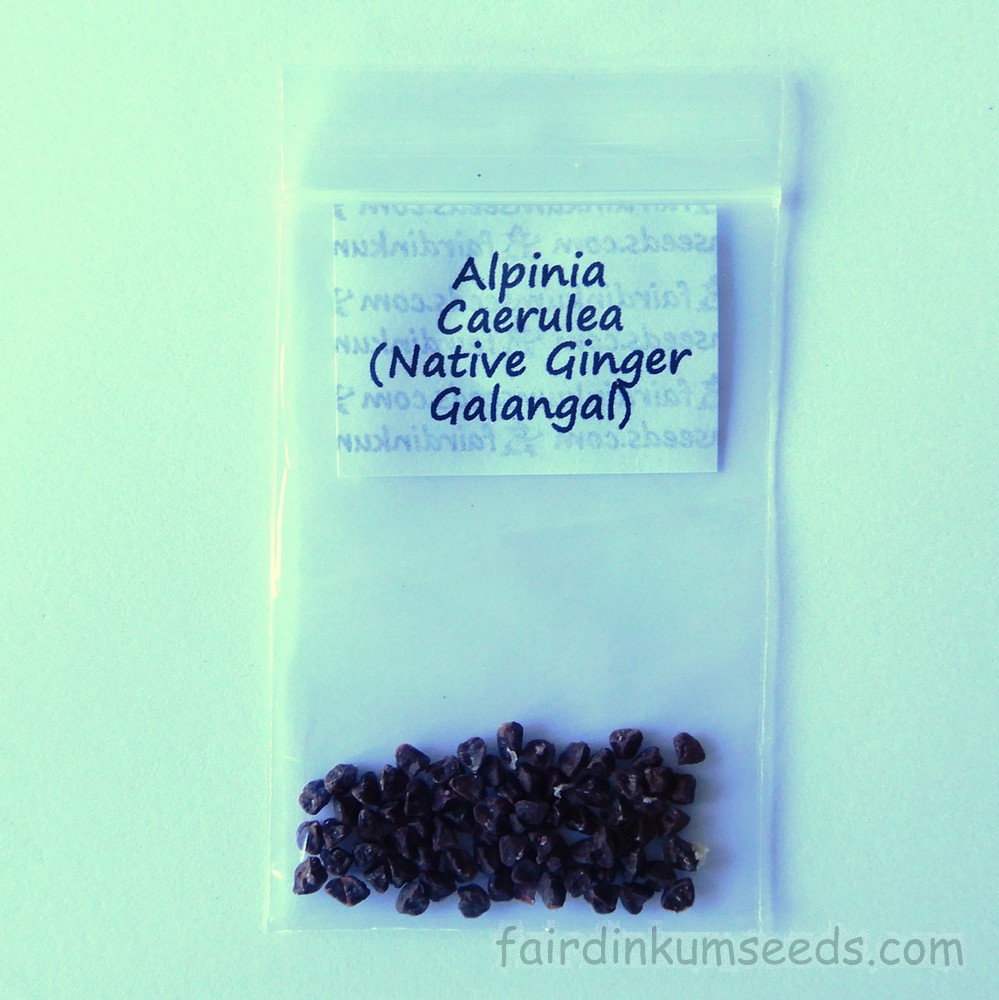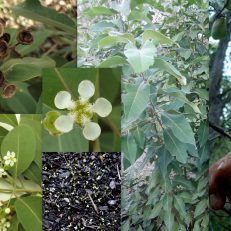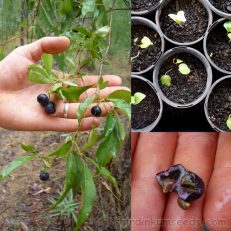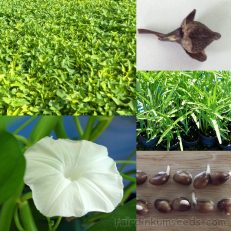Please read text!
Native Ginger Alpinia Caerulea Galangal Seeds
Packet of 40+ super fresh home grown seeds!
I always knew this form of green leaved native ginger as Galangal though “native ginger” seems to be more commonly used by everyone else these days.
Turns out it is super closely related, much closer than supermarket ginger, with the true Asian Galangal being Alpinia species too!
When I was a fruit picker in the wet tropics it was always made use of by the workers when it popped up in between the rows, along the creek lines or along the block boundaries.
The Aboriginals and Islanders would mostly eat the white lemony arils around seeds, and the SE-Asian workers would dig up the roots for use in curries and spicy fish soups and stews.
Even the Euros and yanks would make use of it, pulling out the leaves to use as fans or as bodgy sun hats.
Chewing the root is a great Monday morning nausea treatment, so that was generally what I saw the older bushies that liked a drink doing.
Same deal for dehydration and heat stroke.
When miles from the shed and flat broke, with quitting not really an option, chewing on this has helped many a backpackers perk up and power through, at least getting them to the end of the day without keeling over.
It is truly amazing to watch the difference, not only in energy levels, but attitude too.
I know it sounds silly, but when you are dying from heat and exhaustion, and everything hurts, it not only gives you energy, and a mild sugar rush sort of feeling, but it somehow makes you feel stronger and more confident again, all at the same time?
I love the stuff and I reckon there is definitely something brain chemical wise going on, but ONLY when you are already depleted or sick.
The rest of the time it doesn’t do anything at all except taste taste deliciously gingery, moist and refreshing.
That’s even if you’re a doofus teen, fasting and eating only a couple kilos every day for a week, just to see what happens in the name of science. (Day 2-3 diarrhea, then Day 4 onwards debilitating constipation from all the fibre being the only noticeable effect I ever experienced. So yeah, don’t do that folks…)
Unlike normal Ginger~Zingiber officinale you get from the supermarket, this fella is really moist, sweet and juicy, a lot like a sugar cane in texture, but maybe 1/3rd as fibrous, much easier to chew on.
It grows fast and produces heaps of large knobbly roots and once you have some established in a little patch it is easy to spread around just by eating the arils and spitting seeds out in any moist shady patches you reckon could do with a patch of ginger, add bit of colour, bit of habitat for the critters.
Back in the day these trails of ginger plants and chewed seeds is one of the ways the white settlers hunted down the original Aboriginal inhabitants.
As they were eating them all the time, everywhere they went in the tropical north, it was like a trail of blue flecked breadcrumbs pointing the way.
The leaves are great for wrapping fish, yams or green vegetables in before baking, just like you would use banana leaf or aluminium foil.
It helps seals in the juices and steams them, adding a beautiful aroma at the same time.
You can use it just the same as normal supermarket ginger, but due to the water content and milder less spicy hot flavour you just two or three times as much.
That isn’t a drama as it grows much much quicker anyway.
It normally takes about 2 months for germination to begin, and I always get a very high success rate.
I generally get ~80%, but even if you only had one, they divide easily by just breaking up the root and replanting where you want it, and they seed prolifically in the first year or second year of growth.
Then at least once a year after that, sometimes two or three.
Awesome plant, handles frost or dry drought conditions fine once established, though it does do best in warm climates, with shady moist soils.
Makes a decent indoor house plant too, but just keep in mind it gets pretty big and the huge fast growing tuberous root will eventually split terracotta pots with ease if you forget to divide them up every couple years.
There is a red leaf form of Native Ginger too from a bit further north and I keep a heap of others at this Ginger & Turmeric link.
Even as ornamental’s they make a great choice, and if you grow them in a sandy well draining soil mix and only water when dry like I do, then I can’t really see any dramas growing these fellas.
I grow mine all in neglected 9lt pots of sandy soil that hardly ever get a water as it makes the harvest super easy and I believe the harsh conditions increase the potency of the plant. You get slightly smaller tuberous roots compared to growing in lush moist conditions, but the end product is more pungent, oily, and way brighter colours when cut.
You can then just dump the pots of soil out on a piece of wire chicken mesh screen and the sandy soil falls through, roots are all left behind nice and clean. Replant the ones with small plants attached, divide up the tubers for use and/or propagation of more plants.
A small piece of clean fresh root grows about 4x the size before dying off for harvesting, and a small piece of root with a plant stem attached already grows 6-10x the size between harvests. Small plants grow way faster and bigger than pieces of root the same size/weight so take note of that when replanting your first couple crops.
Grown by me and the Mrs organically, no chems no nasties, no problems!!!





